StoryWeaver celebrates International #MotherLanguageDay by launching open digital libraries for children in 100 languages.
Posted by Pallavi Krishnan on February 21, 2019“Linguistic diversity is increasingly threatened as more and more languages disappear. Globally 40 per cent of the population does not have access to an education in a language they speak or understand.” - UNESCO International Mother Language Day website
Since 2000, the United Nations has observed February 21 as International Mother Language Day to promote linguistic and cultural diversity and multilingualism. This year, StoryWeaver marks the occasion by opening a gateway to digital libraries in 100 languages for children across the world and thereby addressing the scarcity of books for children in their own languages.
To achieve the milestone of 100 languages, StoryWeaver has collaborated with a global network of organisations and individuals who are helping create this vast resource of children’s storybooks, as part of its ‘Freedom to Read’ campaign.
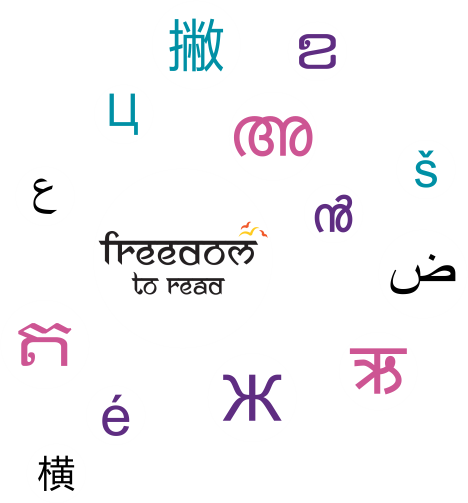
Our partners encompass national and international organisations, as well as language champions who share our passion for creating reading resources for children in their mother tongue languages. Partners like Azad India Foundation, AfLIA (African Library Information Associations and Institutions), Darakht-e Danesh Library, Little Readers' Nook, North East Educational Trust, REHMA, Right To Play, SNS Foundation, Suchana, Unnati Institute for Social and Educational Change and language champions like Agnes N.S. Nyendwa, Amit Dudave, Ana Jovic, Ankit Dwivedi, Kaye Suscang, Maharani Aulia and BE Priyanti, Nguyen Dac Thai Hang, Priya Bhakthan. The languages are varied - from mainstream languages like Afrikaans, French, German, Hindi, Italian, Spanish, Tamil, Telugu and Urdu, tribal languages like Gondi, Korku, Kora and Santali, endangered languages like Occitan to indigenous languages like Chatino, Mixe and Triqui and underserved languages like Assamese, Basa Jawa, Basa Sunda, Bhojpuri, Bundelkhandi, Igbo, Marwari, Sindhi and Surjapuri,
Collaboration has been the cornerstone of the StoryWeaver community, and the high quality of the translations - endured by a rigorous system of peer review - stands testament to the commitment of every contributor to "Freedom to Read".
These partners will take these digital reading resources even further - to serve children around the world, and help them read in their mother tongue languages. AfLIA (African Library Information Associations and Institutions) will roll out their continent-wide reading promotion ‘Read Africa Read’ with the same storybook titles in different languages across Africa. The Ghana Library Authority has already downloaded a book translated into Ewe in the e-readers in the Library and read it aloud to children on the World Read Aloud Day. The SNS Foundation in Rajasthan is working towards building a hyperlocal library of 100 Marwari books which will be used in 1,500 schools in Rajasthan.
The troubling statistic of 40% of the global population not having access to education in a language they speak or understand translates to over 2 billion people who would benefit from having books in their mother tongues.
“Through StoryWeaver, increasing access to quality reading resources for children has been made possible like none other. We are also grateful to collaborate with like-minded partners whose primary mission -- like ours -- is to get every child to read,” shares Suzanne Singh, Chairperson, Pratham Books.
Click here to take a look at a short video on the Freedomto Read journey.
Be the first to comment.#FreedomtoRead2020: Azad India Foundation on creating 70+ Surjapuri bilingual books
Posted by Remya Padmadas on February 21, 2020
Azad India Foundation (AIF) was founded by Yuman Hussain in 1998 to seed initiatives in education & primary health care. The organisation's activities reach out to marginalised women, adolescents and underserved children from rural and urban areas of the Kishanganj district in Bihar.
We are delighted that AIF is participating in our Freedom to Read campaign for the second year in a row. They are also our first partner-translator this year to have completed their goal of translating 70+ Surjapuri bilingual books (English-Surjapuri and Hindi-Surjapuri). In an email interview, Yuman Hussain, Executive Director of Azad India Foundation, tells us about the importance of bilingual books and how these books have helped children read and learn in their mother tongue.
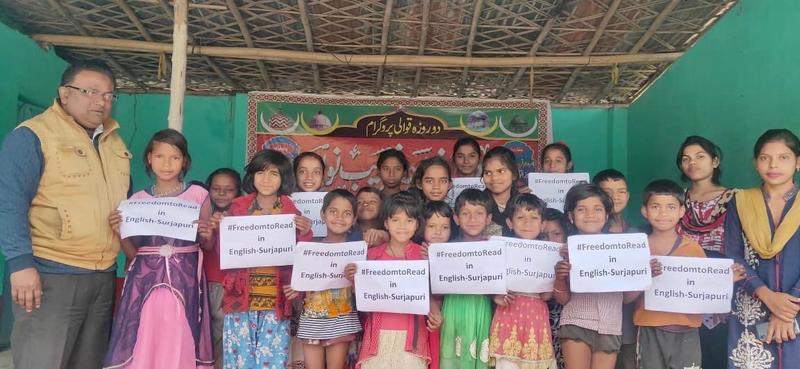
The Azad India Foundation team and the children in their learning centre in Bihar
“Azad India Foundation is delighted to be part of the #FreedomToRead campaign for the second year in a row. Foundational learning skills like reading are essential for a child’s progress. StoryWeaver is a unique platform that allows children to learn these skills joyfully in their mother tongue.”
- Yuman Hussain, Executive Director, Azad India Foundation
We are delighted that Azad India Foundation has participated in the Freedom to Read campaign for the second year in a row! How does it feel to be a part of the campaign for the second time?
It feels great to be part of the Freedom to Read campaign once again and to complete the translations well before time! The credit goes to the team. It was quite challenging this year as we chose to create bilingual books in English-Surjapuri.
Do tell us about the Surjapuri community and language: What is the mother tongue footprint and what resources are currently available? What are the challenges faced by Surjapuri children when they enter school?
Surjapuri is a dialect that is spoken in the Seemanchal area comprising Kishanganj, Araria, Katihar and Purnia of Bihar, and with minor variations in some parts of Bengal, neighboring Kishanganj.
I am currently not aware of any resources that are available for children in the local dialect of Surjapuri. In most schools, children learn in Hindi. In some schools, they are also taught in Urdu.
Can you tell us a little bit about how the Surjapuri books created from last year’s campaign are being used? Do the children have any favorites?
We have taken printouts of the Surjapuri books from last year’s Freedom to Read campaign and these are being used in classrooms for supplemental reading. Some of the STEM books are being used to explain maths and science concepts. The kids really like Gappu Can’t Dance (Gappu nachwa ne sakche) and enjoy enacting it in class. However, Fat King Thin Dog (Moto Raja Patla Kutta) is their all-time favourite!
This year, you’ve chosen to create bilingual books in English-Surjapuri and Hindi-Surjapuri. Could you tell us about the need and benefits of these books?
Bilingual books help children understand concepts easily, and if created in the local dialect, then it becomes so much easier for children to learn. The English-Surjapuri books are great teacher learning material (TLM) for non-Hindi or English speakers. Through StoryWeaver, we have access to thousands of free storybooks. We are aiming to create at least 200 books in Surjapuri on the platform.
We do not have reading material/storybooks in English for our children, so these bilingual books for level 1 and 2 are helping our children learn and read English. Aakansha, our India Fellow at AIF, helps with the reading sessions in English–Surjapuri.
Do tell us about your team who worked to create these 70+ Surjapuri bilingual books, and how they went about the translation process.
We have an enthusiastic young team of translators: Chand Quasar, Juhi and Saqlain, supervised by Muzzamil, who rose to the challenge once again. First, they translated storybooks from Hindi to Surjapuri. Then, I added the English version and uploaded the books on StoryWeaver. It was slightly challenging finding the corresponding words/sentences in English that matched the Surjapuri version, but it was fun.
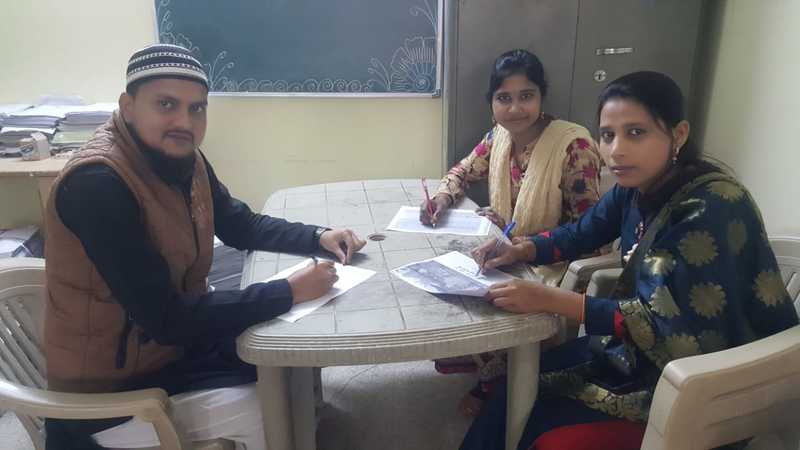
Azad India Foundation's Team Badhte Kadam
Thank you so much, Azad India Foundation, for giving children the #FreedomToRead in Surjapuri!
You can read all the storybooks translated by Azad India Foundation here.
Read more about the organisation here.
Do join the conversation by leaving your thoughts in the comments section below. You can also reach out to us through our social media channels: Facebook, Twitter and Instagram.
Be the first to comment.Seasonal eating with Neema
Posted by Remya Padmadas on January 10, 2017By Bijal Vachharajani
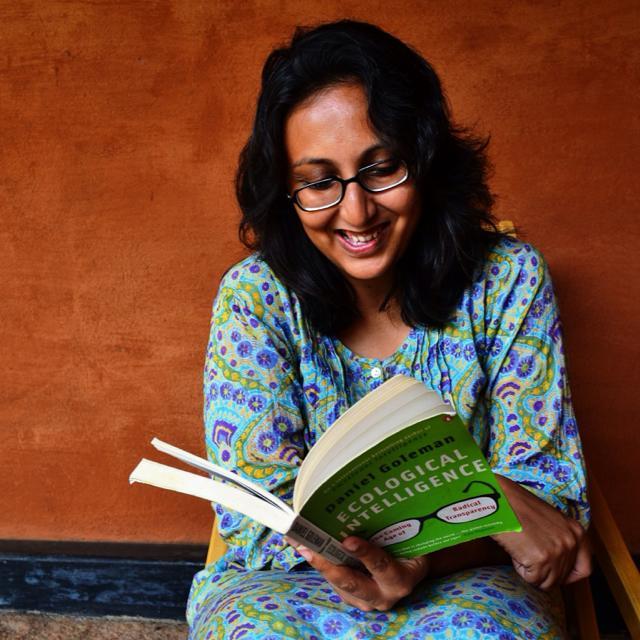
When Bijal Vachharajani is not reading Harry Potter, she can be found looking for tigers in the jungles of India. In her spare time, she works to fund the trips and books. She did this by working as the Editor at Time Out Bengaluru. After having studied climate change at the University for Peace, she now writes about education and sustainable development and is a consultant with Fairtrade Asia Pacific. She is also one half of BAM! Books, an Instagram-led project which talks about children's and Young Adult books. She tweets at @bijal_v.
My mother’s kitchen operates on a seasonal calendar, something I took for granted for a long time. As winter would approach, wondrous smells of ghee, whole wheat flour and jaggery simmering in a kadhai would tell us that godpapdi was being prepared that day. When rain would slow down our work schedule, spinach would no longer be cooked in the house, because mum believed that insects nestled in the palak leaves during the monsoon season. Summer would herald the impatient wait for our regular mango seller, until finally bowls of aam ras, chilled to golden goodness, arrived on the lunch table.
There’s an anticipation to eating seasonally – nothing beats drizzling notun gur over your creamy white dahi in winter, nibbling on slices of raw mango slathered with salt and red chilli powder at the beginning of summer, and wrestling with masala bhutta cobs in one hand and umbrellas in the other during the monsoon season. Which is pretty much what Neema, the protagonist of the picture book "What’s Neema Eating Today?" does – eat with relish but seasonally. And Priya Kuriyan has created the perfect Neema – a child who eats with abandon, enjoys her food, while revelling in nature’s bounty. Really, this picture book is all down to the extremely talented Priya!
Today with technology, our food’s taken on a homogenous quality which while convenient, is almost boring. Watermelons are available through the year, never mind that they taste bland most months. Strawberries taste like little cardboard pieces, while the mysteriously-available-in-March-mangoes are best left on trees to ripen naturally. I stopped eating bananas for a while when I read this story about how to keep up with our insatiable demand, farmers were being forced to ripen the fruits with the help of harmful chemicals. And I suspect Neema would definitely turn up her nose at it as well.
Which is why I was excited to do a book on eating as per the season, when Yamini Vijayan of Pratham Books StoryWeaver asked me to write one (I commission and edit a set of STEM picture books on environment for them). Of course, one of the challenges was leaving out autumn and spring. In school, we learn about the five types of seasons – spring, summer, monsoon, autumn, and winter. But most parts of India experience summer, monsoon, and winter, and which is why we decided to concentrate on those seasons. And Priya has captured the seasons beautifully – from the glowering clouds that roll up during the monsoon to that gorgeous feeling of being outdoors on a crisp, winter day. It’s all in there.
Neema is inspired from some of the work I have done with Fairtrade over the last couple of years – I have had the privilege to meet farmers and I am always gobsmacked at the kind of seasonal and local variety you find in our country. At the Fair Trade Alliance Kerala seed fest, a farmer from the Mananthavady taluk in the Wayanad district of Kerala had put up a dazzling display of 26 kinds of chillies. Another farmer who is part of Chetna Organic in Telangana is saving a local variety of red gram seed and growing it for her family. In Odisha, I sampled kala jira rice, which when cooked is so fragrant, that you will forget basmati in a trice.
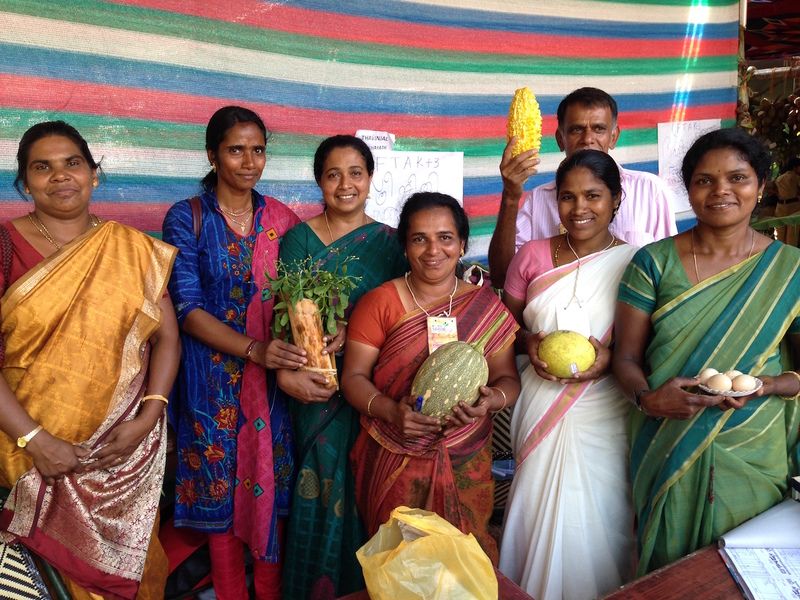
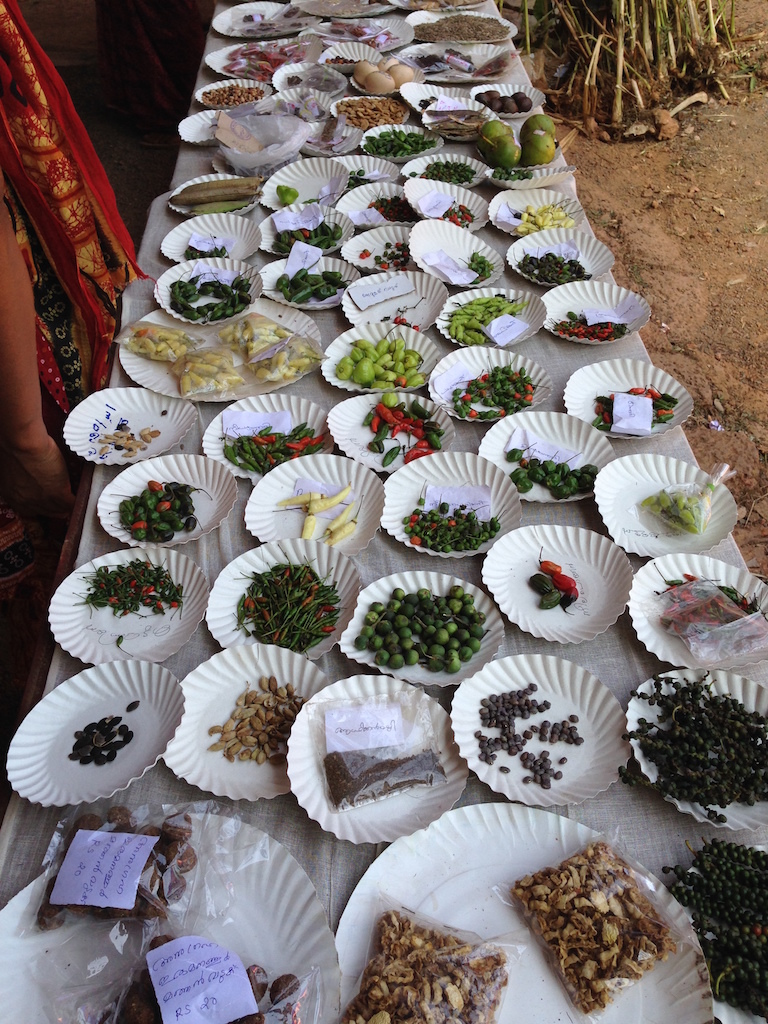
Copyright Bijal Vachharajani/Fairtrade India
However, not all’s well in the world of food diversity. The Food and Agriculture Organization of the United Nations estimates that since the “beginning of this century, about 75 per cent of the genetic diversity of agricultural crops has been lost.” And climate change is impacting agriculture at an unprecedented pace – the FAO says that the “change in seasonality attributed to climate change can lead to certain food products becoming more scarce at certain times of year. Such seasonal variations in food supply, along with vulnerabilities to flooding and fire, can make livelihoods more vulnerable at certain times of the year. Although these impacts might appear indirect, they are important because many marginal livelihood groups are close to the poverty margin, and food is a key component of their existence.”

Atram Kusu Bai is a Fairtrade farmer with Chetna Organic in Telangana. A cotton farmer, she's also preserving a red gram seed that is indigenous the region. Image copyright Bijal Vachharajani/Fairtrade India
It’s not easy always to eat seasonally, when you’re shopping online or faced with a dazzling array of apples, kiwis and oranges from far-flung corners of the world. Our food system has increasingly become complex. But ask your fruit seller, keep a track of seasons, and enjoy eating them. After all, fruits and vegetables taste best when in season. Or simply like the meme goes: Neema eats with the seasons. Neema is cool. Be like Neema.
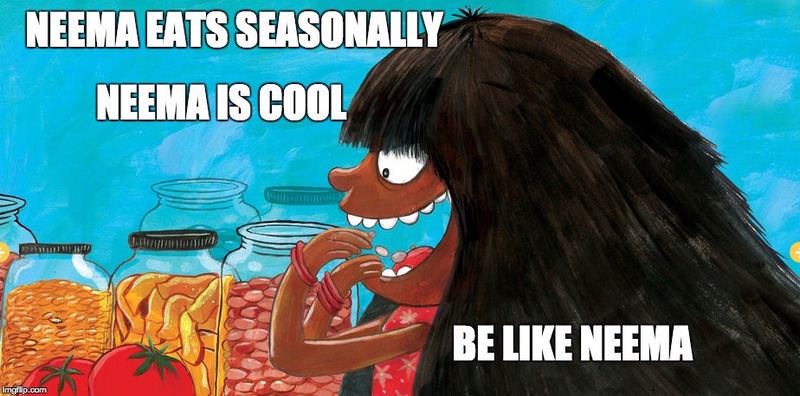
(Psssst... we had a super fun, informative twitter chat with Bijal on January 4th. If you missed it, you can read it here on Storify!)
Be the first to comment.